Sanctuary scientists want to learn more about how seabirds react to changes in their primary food source and what factors cause changes in forage fish abundance. Signals from the tags have allowed scientists to plot bird movements. They can then relate the movements to oceanographic features such as water temperature, bathymetry, chlorophyll concentration, ocean fronts and other factors that might result in increased productivity or that concentrate prey.
This year, we had two tagging cruises: the first one was in mid June and targeted either Cory's or Sooty Shearwaters, the second was in early July and targeted Great Shearwaters. This is the second year of branching out to include non Great Shearwaters in our tracking project. Since Great’s are the only species to reliably come in to chum during the day (our typical catch method), we have to go out at night to catch other species. Last year we tagged five Cory’s Shearwaters at night, and this year we were looking to either catch more Cory’s to increase our sample size, or to catch Sooty’s and branch out into a new species.
When we headed out that first afternoon, we didn’t know what to expect. We weren’t sure where the shearwaters were, how many of which species would be present, or if they would even be heavy enough to be able to tag (a bird has to weigh over 700g so that the tag is not too much of an added burden on the bird). We headed to the SE corner of the Sanctuary to see what we could find. We didn’t have many birds for most of our transit across the Sanctuary, but as we got further east we started to see some birds. In the extreme SE corner of the Sanctuary, we finally found enough birds to try to tag, so we hung out and watched the sunset as we waited for it to get dark enough to successfully catch them.
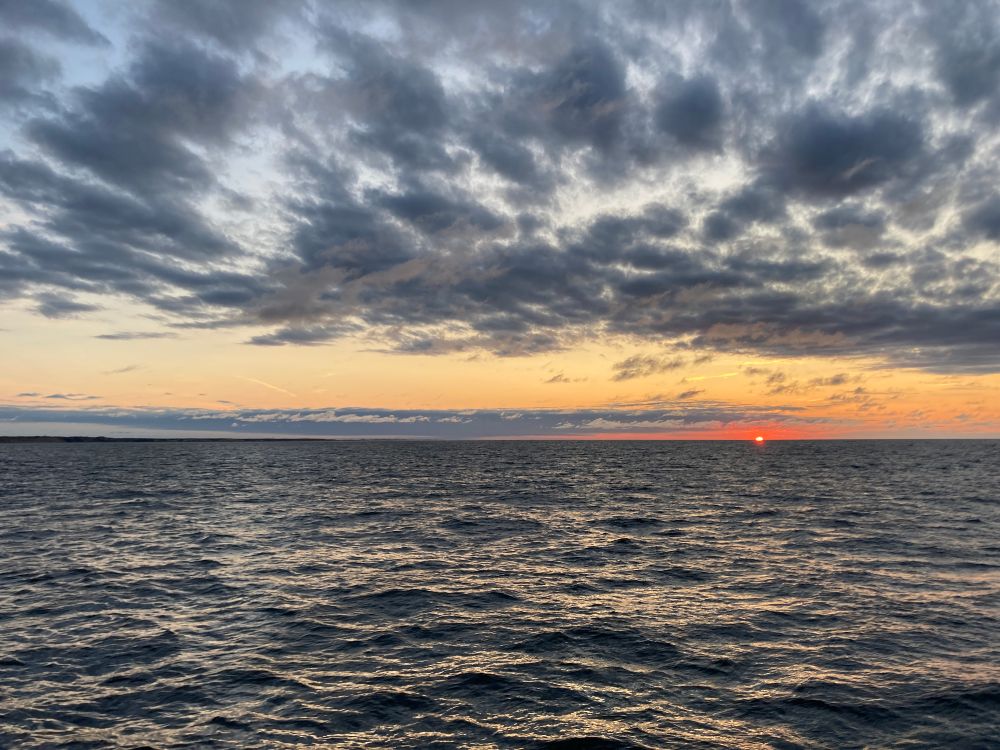
Catching birds at night involves going out in a small inflatable in calm seas and a dark moon, and finding birds roosting on the water in the dark. When we do, we shine a bright light at them which confuses them enough so that they can’t fly away. We then chase after them and scoop them up with a net and put them in a modified pet carrier to hold them until it’s time to process them (process is the term used to describe taking all the measurements and samples as well as the banding and tagging of the bird). We ended up tagging six Sooty’s and three Great’s in two nights of effort. This was a very successful result as it’s the first year we have multiple Sooty’s tagged!
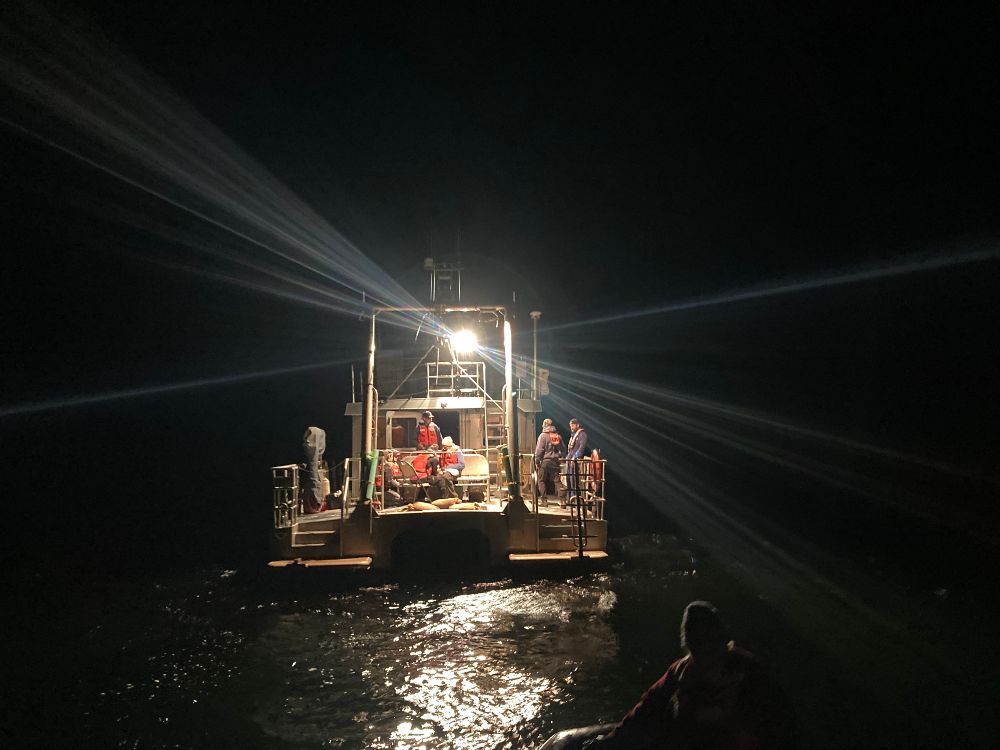
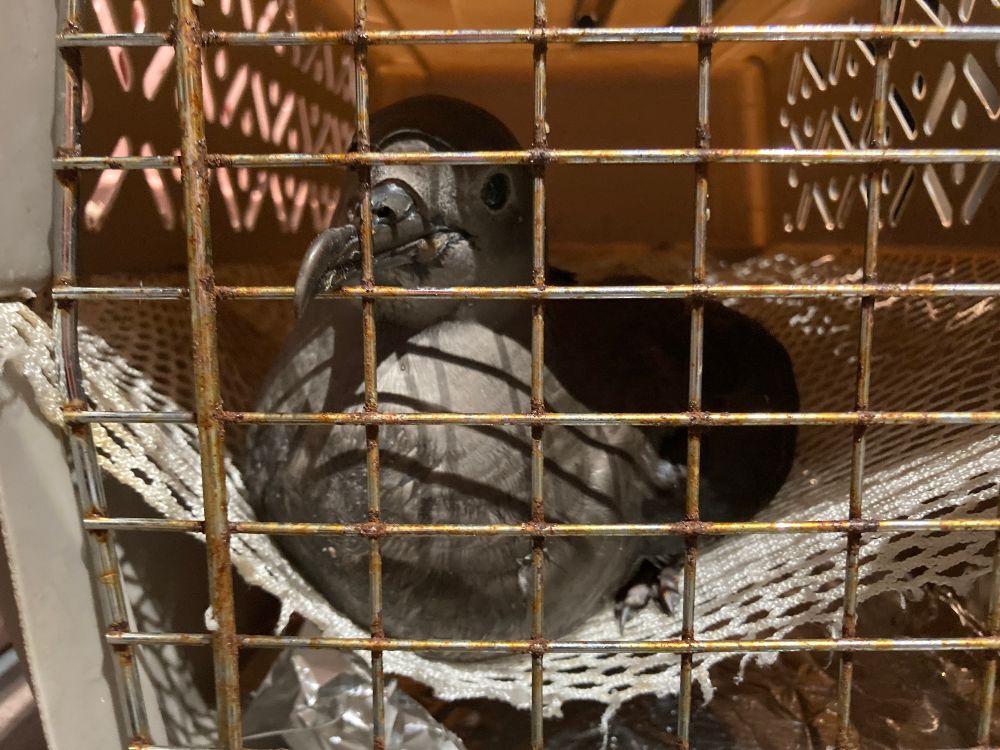
In July, we were back to daytime tagging with chum. In three days we were able to tag 13 Great’s, and two of these were equipped with new GPS tags that we are beta testing this year. This is an exciting opportunity to help in the development of new tag technology and get higher resolution data points in the process.”
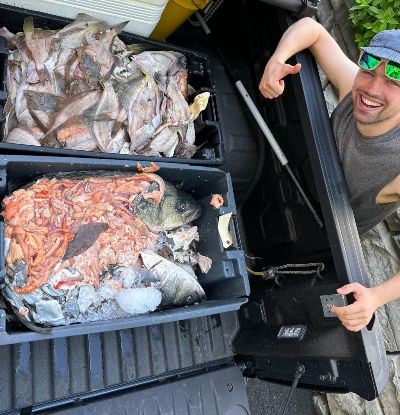
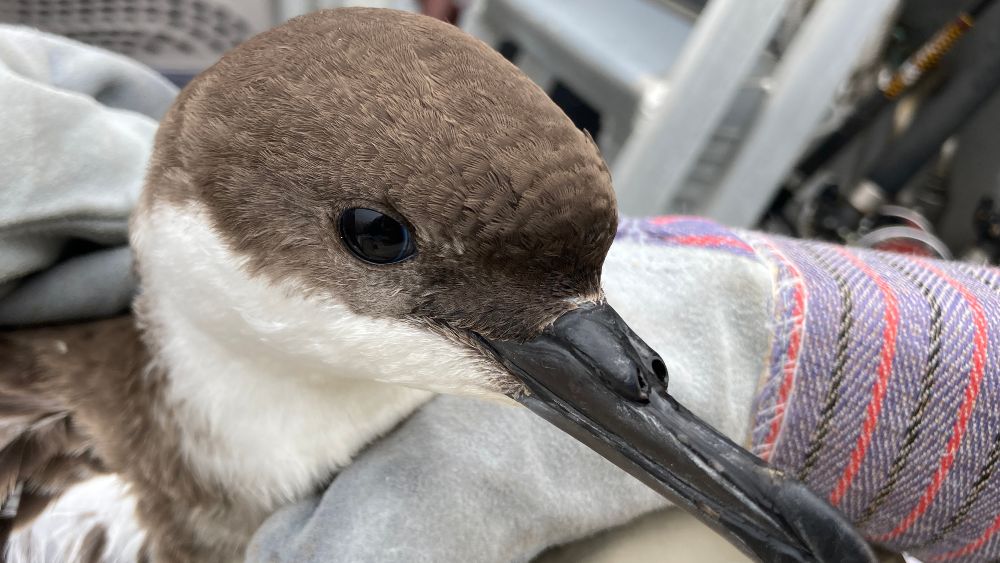
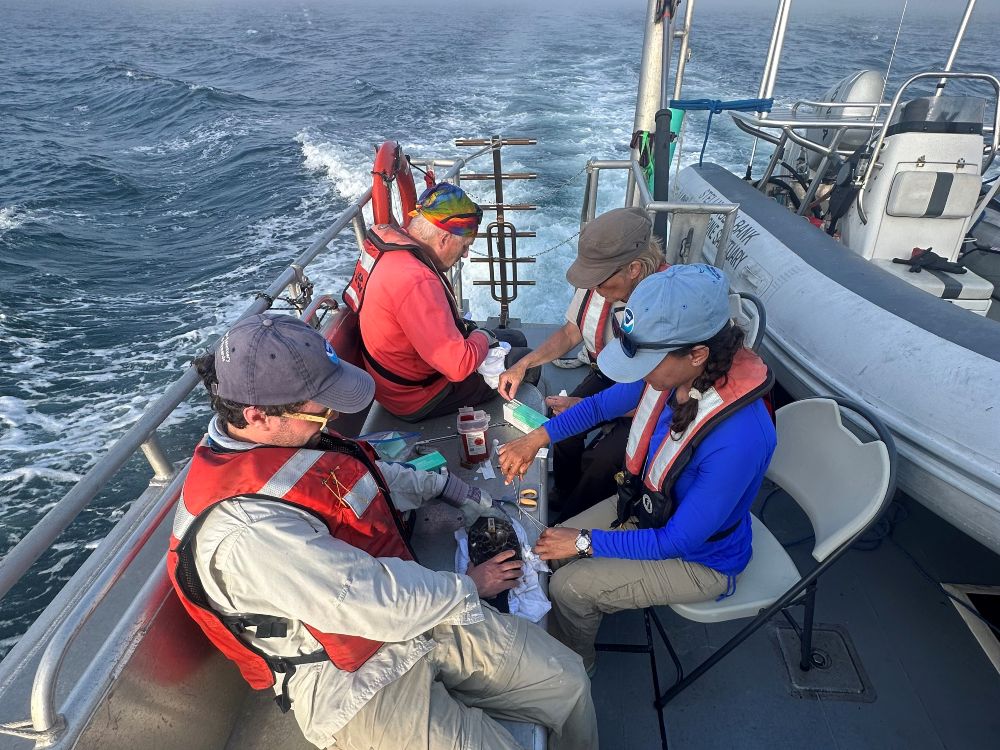
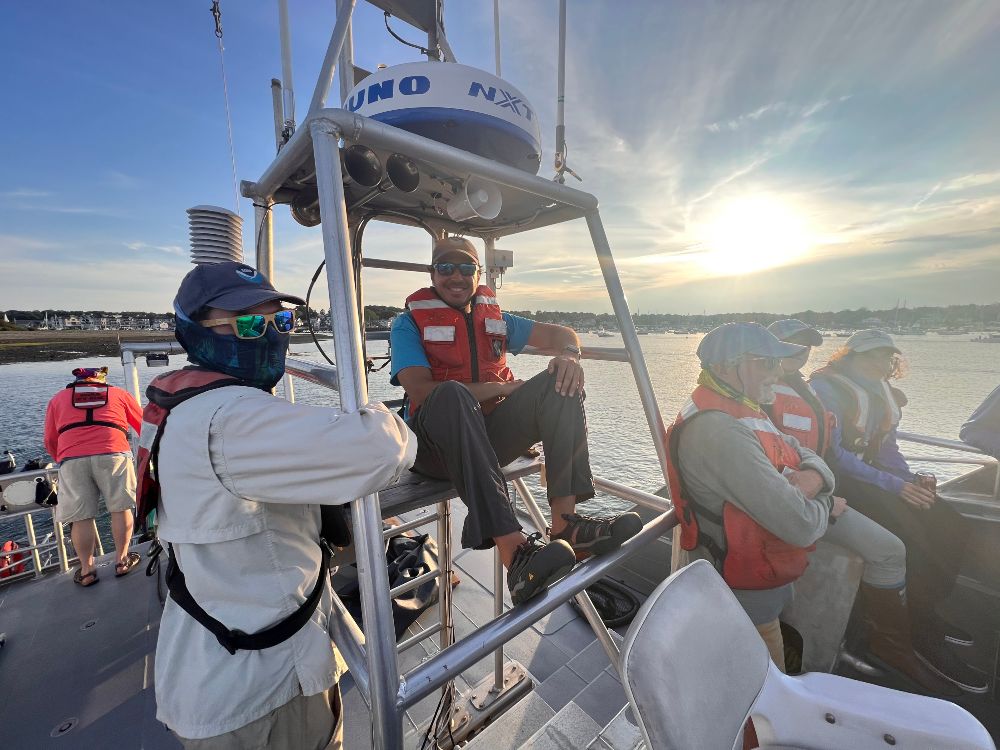
Summary reports of the birds' travels and cumulative maps of each bird's tracks will be updated monthly. The maps are to be used for educational purposes only. For more timely notices, check our Twitter (@NOAASBNMS) and Facebook and the project's associated twitter account @TrackSeabirds.
Loki is continuing migration south without stopping to feed. Unlike our Great Shearwaters, it has been sticking relatively close to shore for its entire route. Also unlike the Great Shearwaters, it is continuing to follow the coast of Africa to the south-east instead of crossing the Atlantic to Brazil upon reaching south-west Africa. Scarlet Witch also just started migration and in two days made it from the north of Ireland to the north of Portugal. So far it is staying farther offshore than Loki, it will be interesting to see if that trend continues as it moves south. Loki has finally caught up with Scarlet witch in distance traveled, but with Scarlet starting migration, that lead is likely to be brief. Both birds have traveled just over 30,000 kilometers so far!
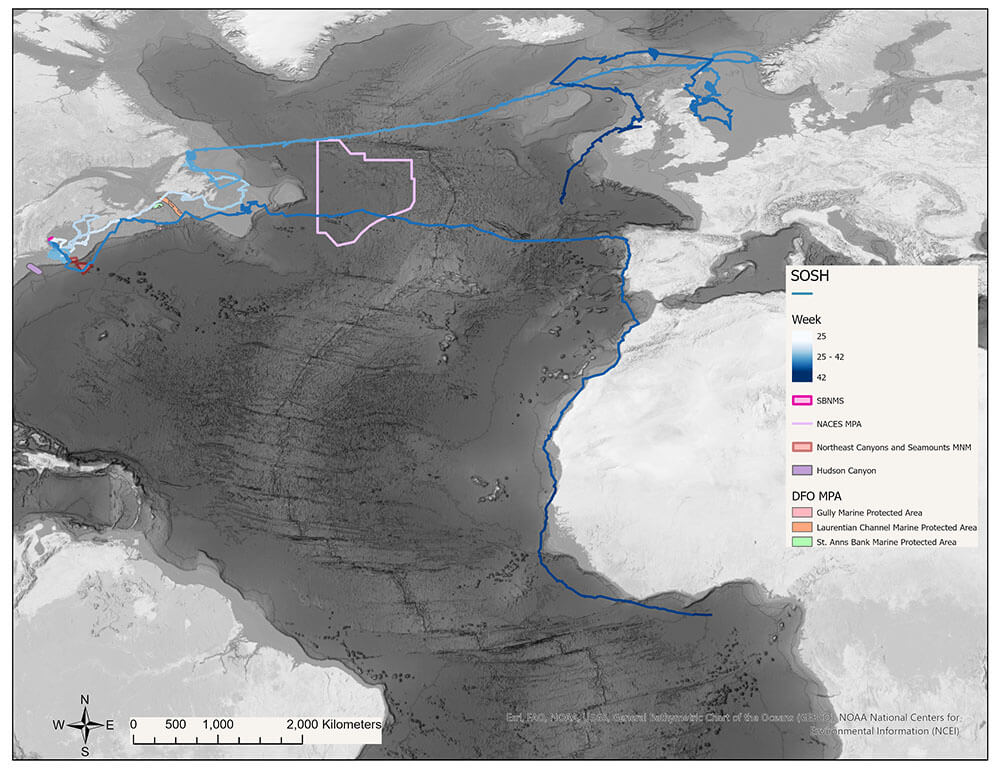
Starting the month, all the Great Shearwaters not named Ant Man were about as far south and west as we see our tagged birds go, feeding around the New York shipping lanes south of Martha’s Vineyard and Nantucket. Groot was heading south, passing through Hudson Canyon before continuing south along the shelf edge when we lost transmissions. This was curious behavior for one of our tagged birds, and there are only one or two instances of a bird doing this in past years. It would’ve been nice to be able to continue to follow this bird’s travels to see whether it was going to continue to head south on the Western Atlantic for migration.
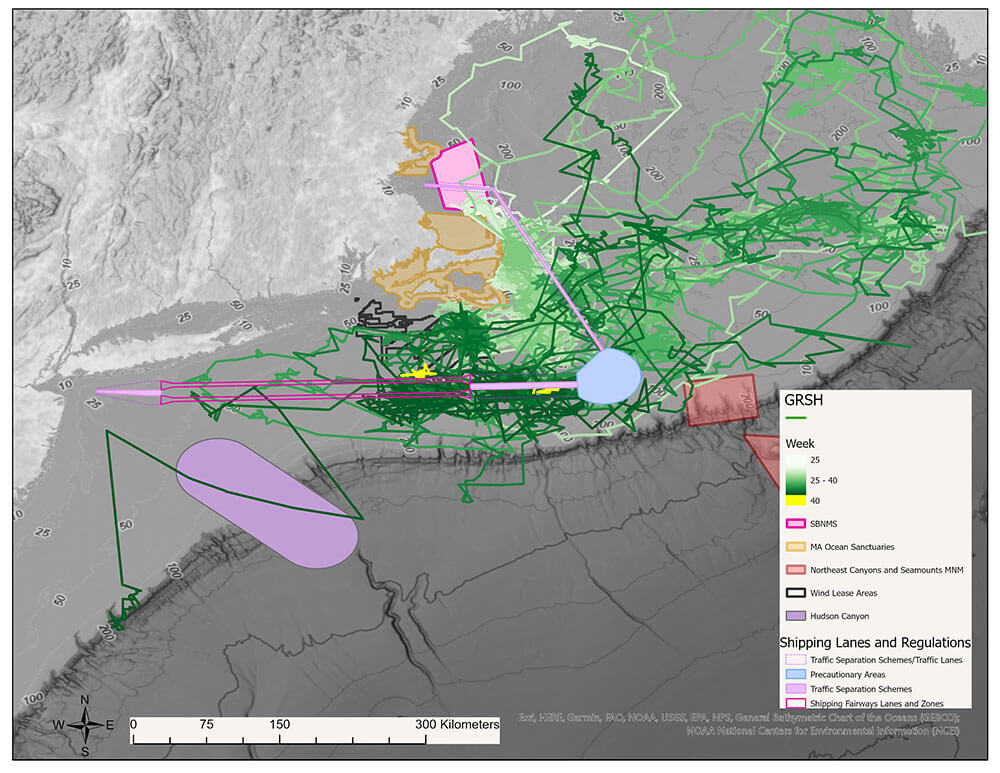
Iron Man and Doctor Strange moved north into the Gulf of Maine before settling in again in the Great South Channel and Georges Bank respectively. Hawkeye remained in the waters south of Martha’s Vineyard while Ant Man stayed in SW England, moving very little in the last couple of months. We have just lost transmissions from Ant Man, which leaves us with just the three Great Shearwaters mentioned prior still transmitting. Iron man and Hawkeye are in a dead heat for distance traveled, with Iron Man having a less than 100 km lead at 19,710 kilometers. This is over 1000 km more than Ant Man despite the fact that Iron Man hasn’t crossed the Atlantic yet.
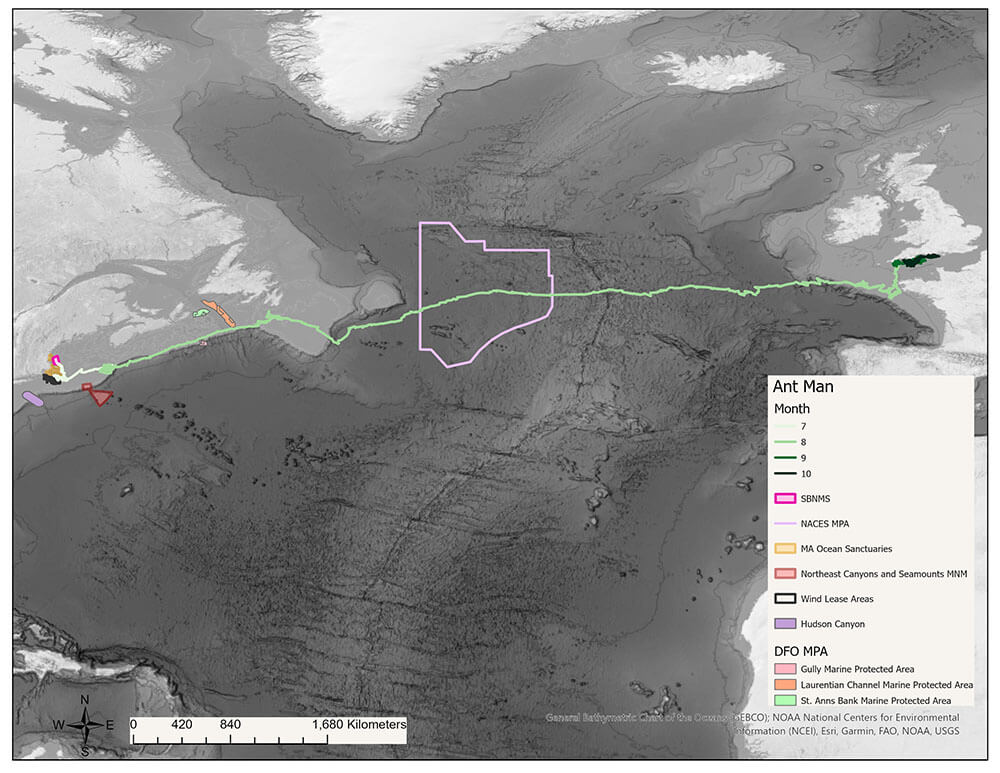
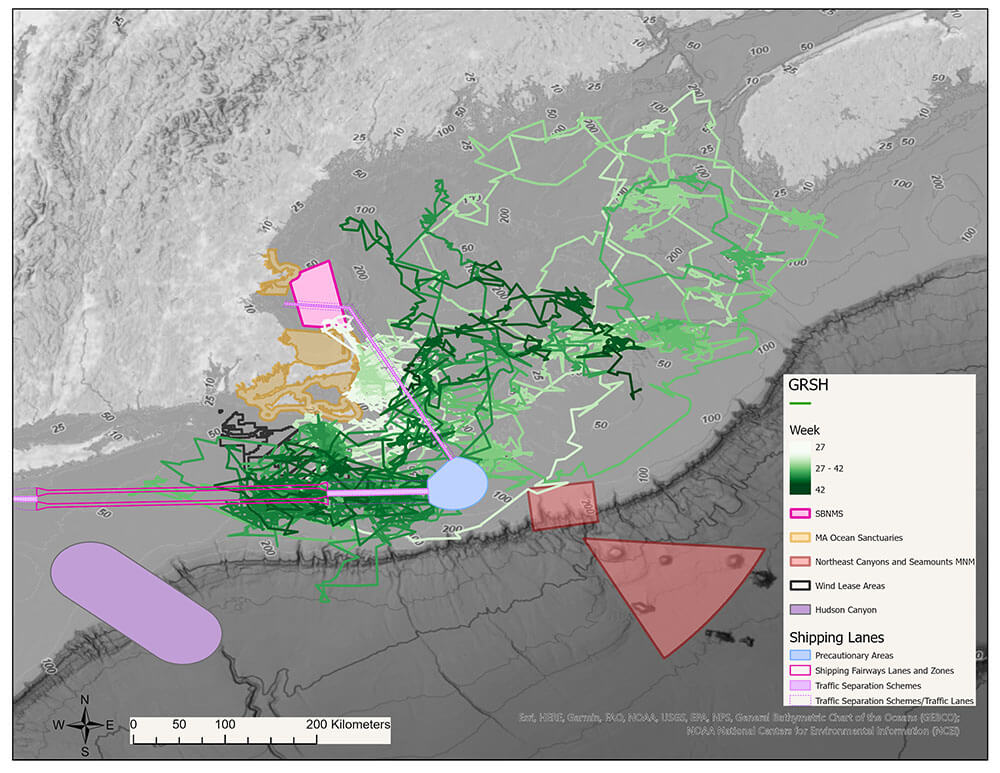
Some Sooty Shearwater news is that Captain America, after completing the transatlantic journey from Greenland to Scotland, became the first tagged bird to pass 2,000km traveled this year! Unfortunately, the tag stopped transmitting shortly after reaching that milestone, so we will be unable to track their movements further. Even more noteworthy is that Scarlet Witch became the first of our tagged birds to ever go into the North Sea! We have data for over 10 years and it’s never been documented before.
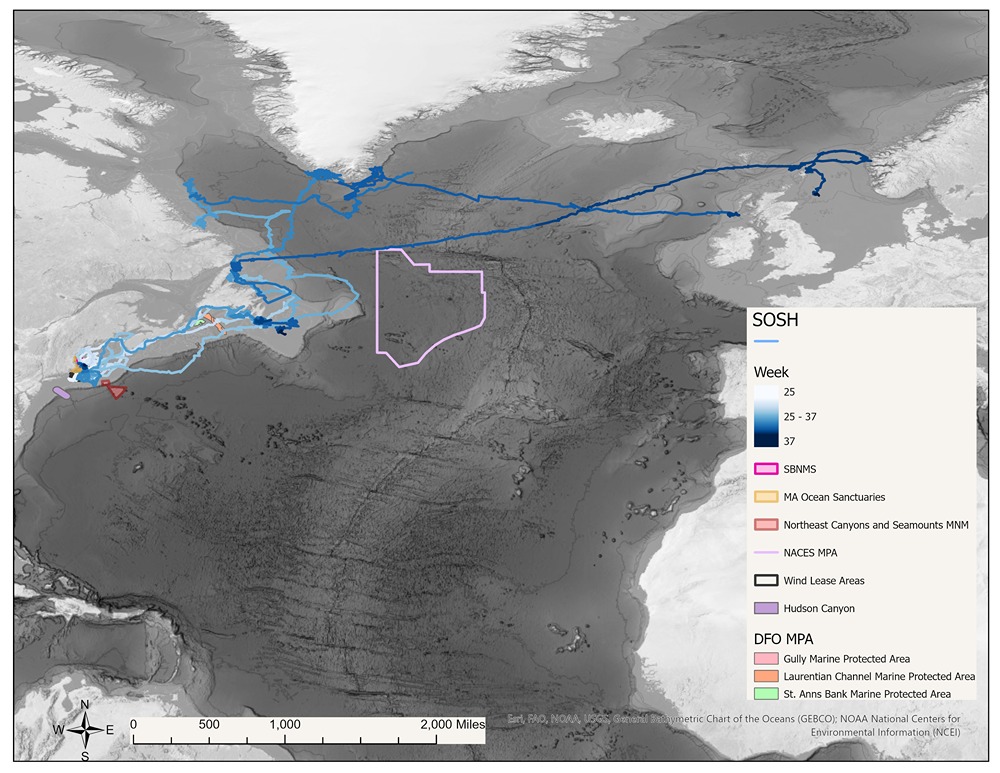
We are still tracking 9 of our 16 Great Shearwaters. Ant Man is still the only one who has crossed the Atlantic. Despite this, Ant Man is not the distance traveled leader for the GRSH, this instead goes to Thor, who is still on Georges Bank. The rest of the birds still transmitting are staying local to Cape Cod.
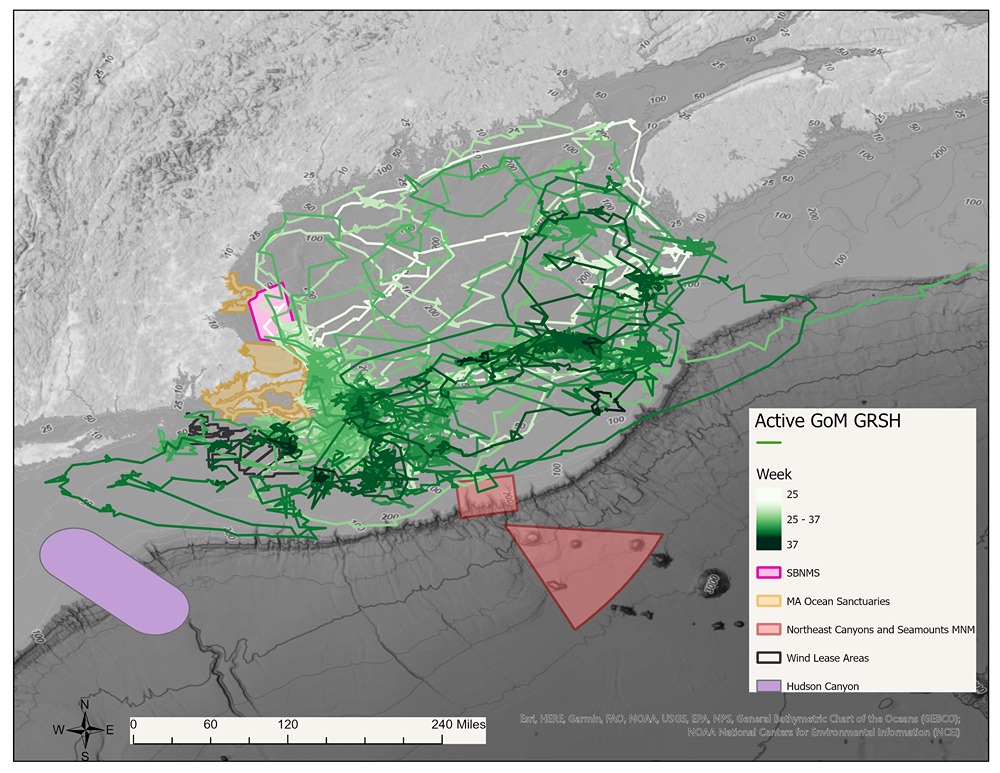
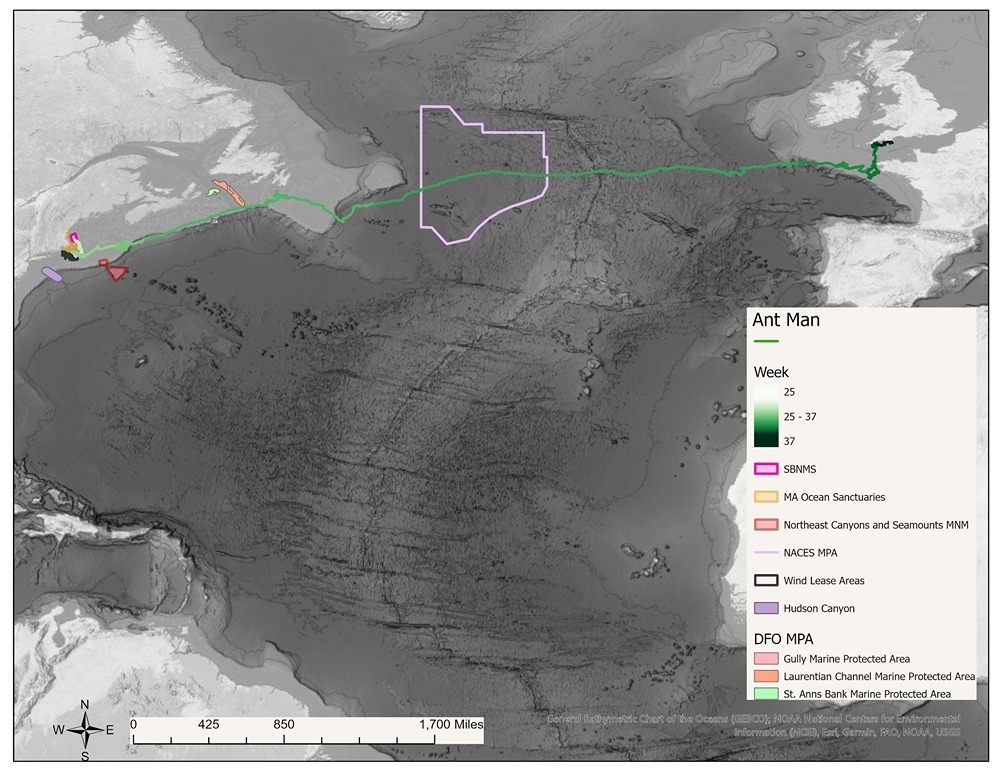
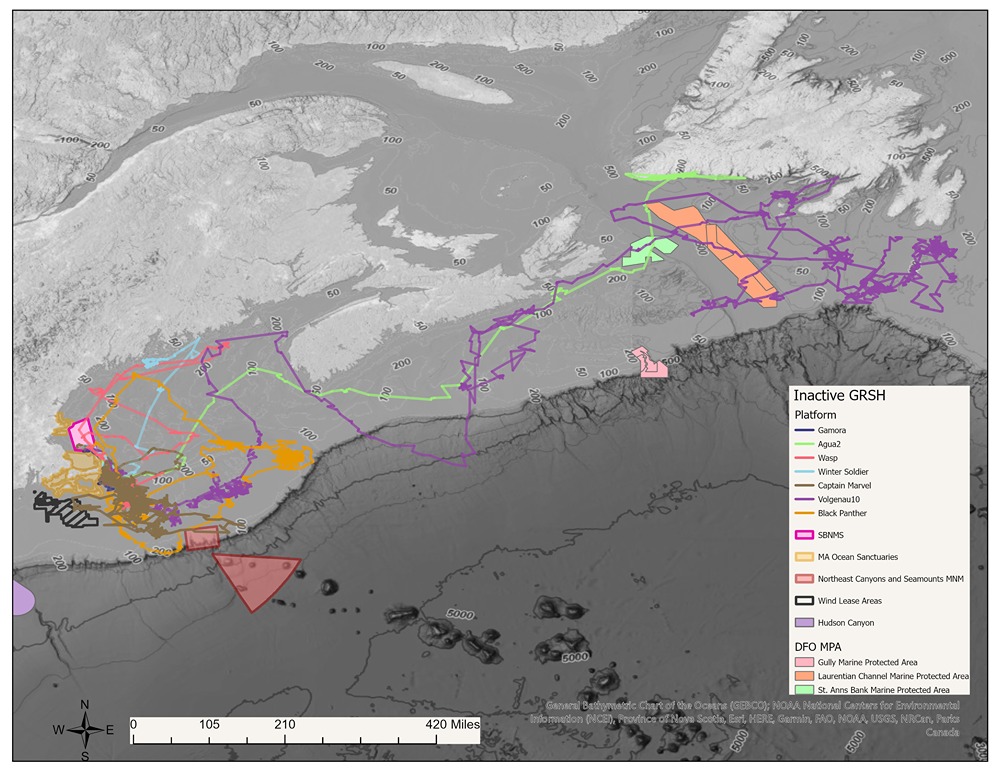
The update on Sherwin is that it did not continue farther north and instead continued foraging along the shelf edge off of Labrador, before heading east of the tip of Greenland where the tag stopped transmitting. While this is less exciting, it is the more expected path for a Sooty Shearwater to take.
Fellow Sooty Shearwaters Captain America and Scarlet Witch crossed the Atlantic and are now off the north coast of the U.K. Scarlet Witch crossed directly from the feeding grounds off the north coast of Newfoundland, while Captain America made a detour to the south coast of Greenland to feed for a while before crossing. Rounding out the rest of the Sooty’s; Hulk and Rocket are both still off SE Newfoundland while Loki, ever the homebody, stays local to Cape Cod.
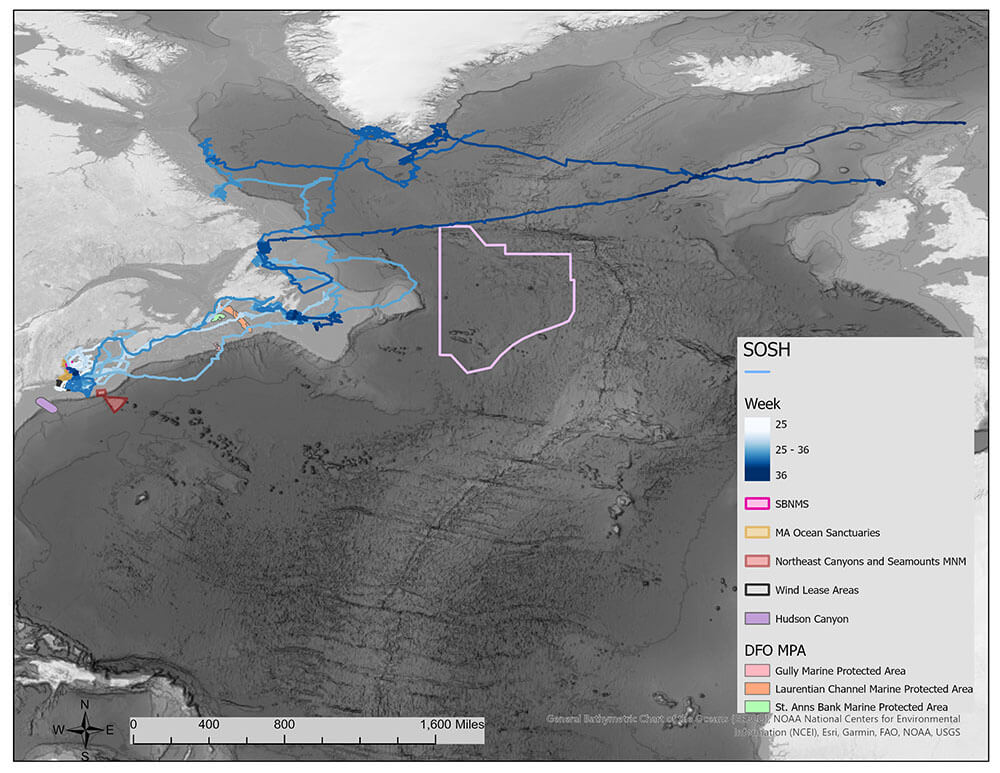
Ant Man continued to head east and became the first Great Shearwater of the season to cross the Atlantic. It is now in the English Channel and foraging off the SW coast of England. Unfortunately, the transmitters of the other two Great Shearwaters that were around Newfoundland have stopped transmitting, so we don’t know where those birds are now. Thor turned around and ventured up to Brown’s Bank and the Northeast Channel before heading back south. Groot and Doctor Strange headed even farther south and west than Thor did, neither one quite going as far as Hudson Canyon, but both were south of Long Island before heading back east to the wind farm lease areas south of Martha’s Vineyard where they currently are. Captain Marvel, Thor, and Iron Man are all in southern George’s Bank north of Hydrographer Canyon.
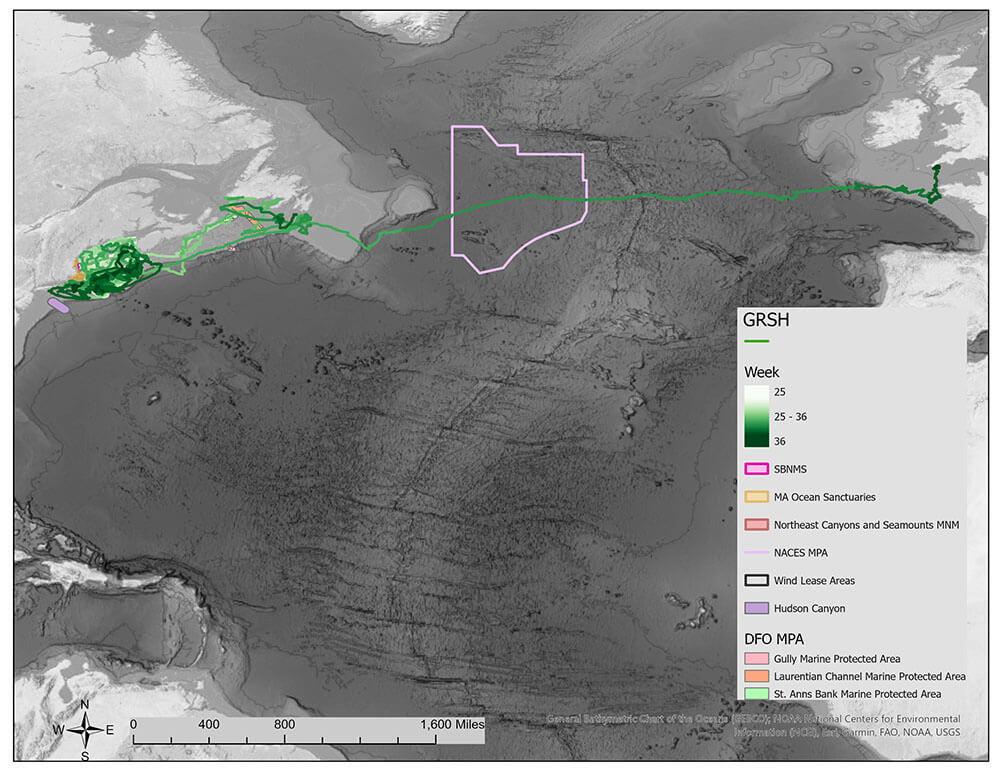
Sooty Shearwater Sherwin continues to head north up the coast of Labrador, CA. This is not known to be a highly
used area for the species, so it will be very interesting to see what they do next! Are they going to continue
north into the Davis Strait? Or turn around and head east of Greenland where most of the Sooty Shearwaters are
known to go?
As for the rest of the Sooty’s, Loki is staying close to MA, now on Georges Bank. Rocket and Hulk are off the
south side of Newfoundland, while Captain America and Scarlet Witch are off the north side of Newfoundland.
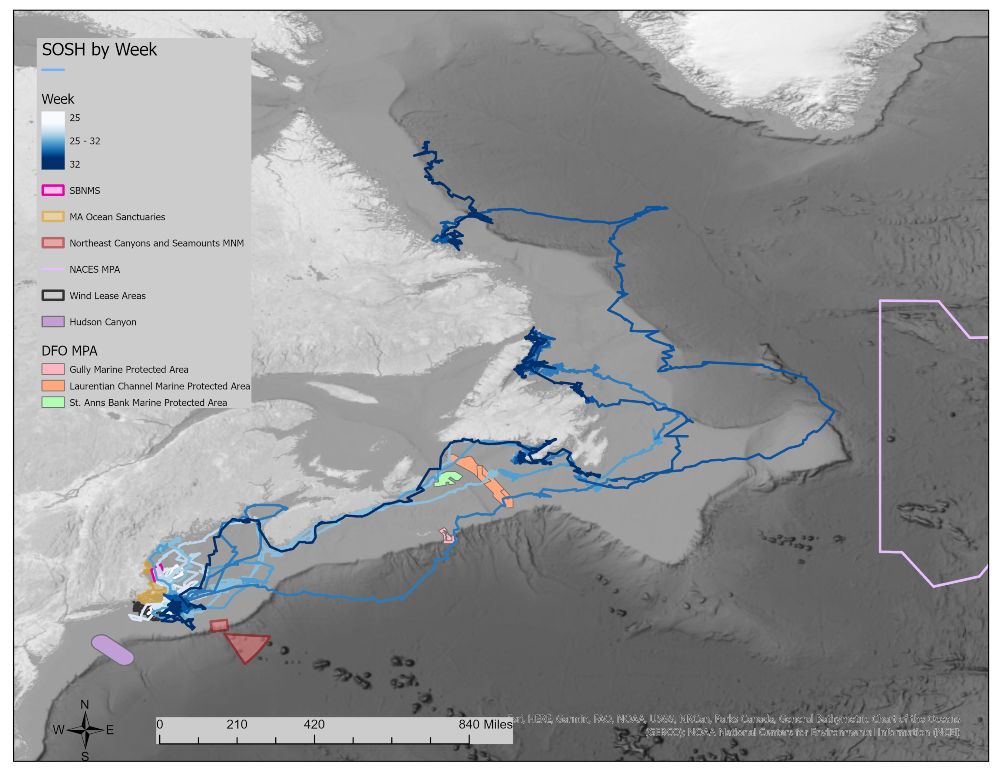
Most of the Great Shearwaters are staying in the Gulf of Maine. Thor has bucked the trend and headed south to off of Block Island, RI. Most of the birds that we get don’t go that far south-west after we tag them, so it will be interesting to see where Thor goes next. Ant Man is the farthest afield of the Great’s, and is approaching the NACES Marine Protected Area. This is a large MPA in the high seas south of Greenland. Black Widow is off the south side of Newfoundland in the same general area as Sooty’s Hulk and Rocket, while Agua2 is farther to the west along the SW coast of Newfoundland.
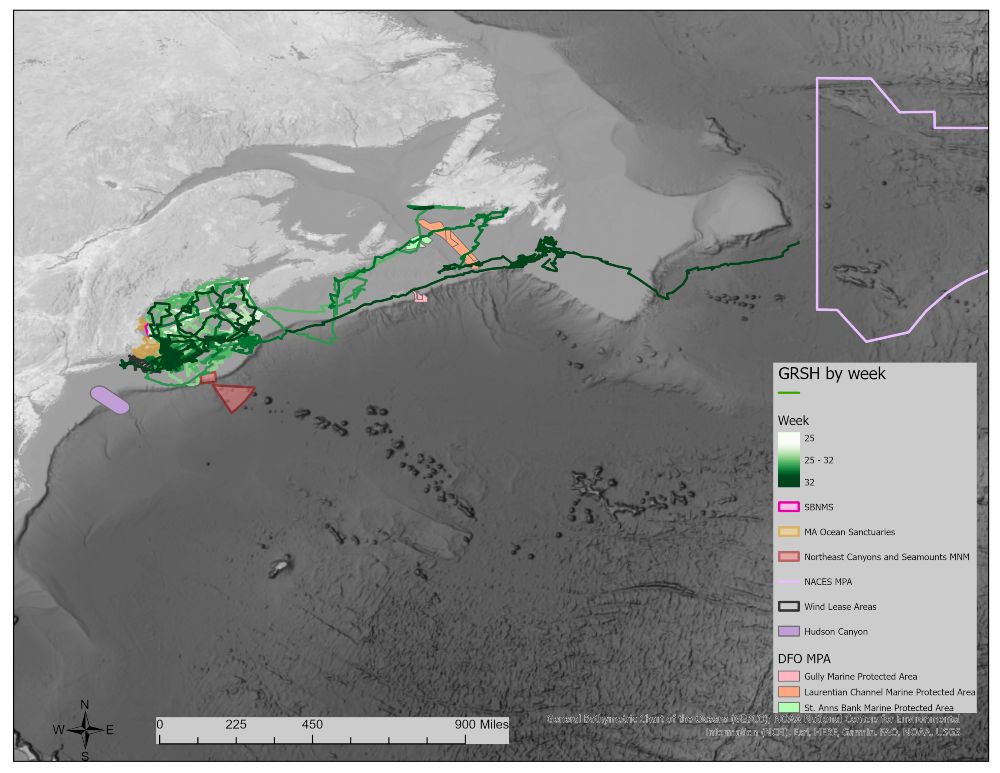
The six tags on Sooty Shearwaters are still all transmitting with four birds off of Newfoundland and two birds off Nantucket. Two of the Great Shearwater tags have stopped transmitting. Peter Quill stopped transmitting on the 15th of July (duration of eight days), and Winter Soldier stopped transmitting on the 29th (duration of 22 days).
For Educators: The sanctuary offers two maps for tracking shearwater movements. One map is for the Gulf of Maine and the second is of the Atlantic Ocean (North and South Basins). The coated surface on the paper allows for the placement and removal of sticky dots for repeated use. The sanctuary education team has prepared a generic tracking activity and other background materials. Email stellwagen@noaa.gov for more information.
The Team: Dr. David Wiley, research ecologist for the sanctuary, leads the shearwater tagging project. Additional sanctuary staff include Michael Thompson, sanctuary geographer and GIS specialist, and Dr. Tammy Silva, postdoctoral researcher, along with Kevin Powers, a volunteer with the Stellwagen Sanctuary Seabird Stewards program and seabird expert. The research team includes Linda Welch, U.S. Fish and Wildlife Service seabird specialists at the Maine Coastal Islands National Wildlife Refuge, Dr. Les Kaufman, Boston University, Dr. Kent Hatch, Long Island University, Dr. Anna Robuck, University of Rhode Island, and Dr. Robert Ronconi Environment and Climate Change Canada. Funds for the project have been provided by the Volgenau Foundation, Bureau of Ocean Energy Management, the Davis Foundation, and the Mudge Foundation.